ZMF Headphones as they are currently are likely best known for their wooden dynamic headphones. It would be easy to forget ZMF started as a planar magnetic headphone company. In 2011, ZMF’s first models were modified Fostex T50RPs. As the years progressed, they rehoused the drivers in their own wooden cups and later even modified the drivers for their Blackwood and Ori models. A custom planar magnetic driver seemed to be a natural progression, so the pivot to dynamic drivers may have come to a surprise to ZMF fans in the mid 2010s. However, with the Caldera, ZMF has finally delivered the headphone that people have been awaiting for years.
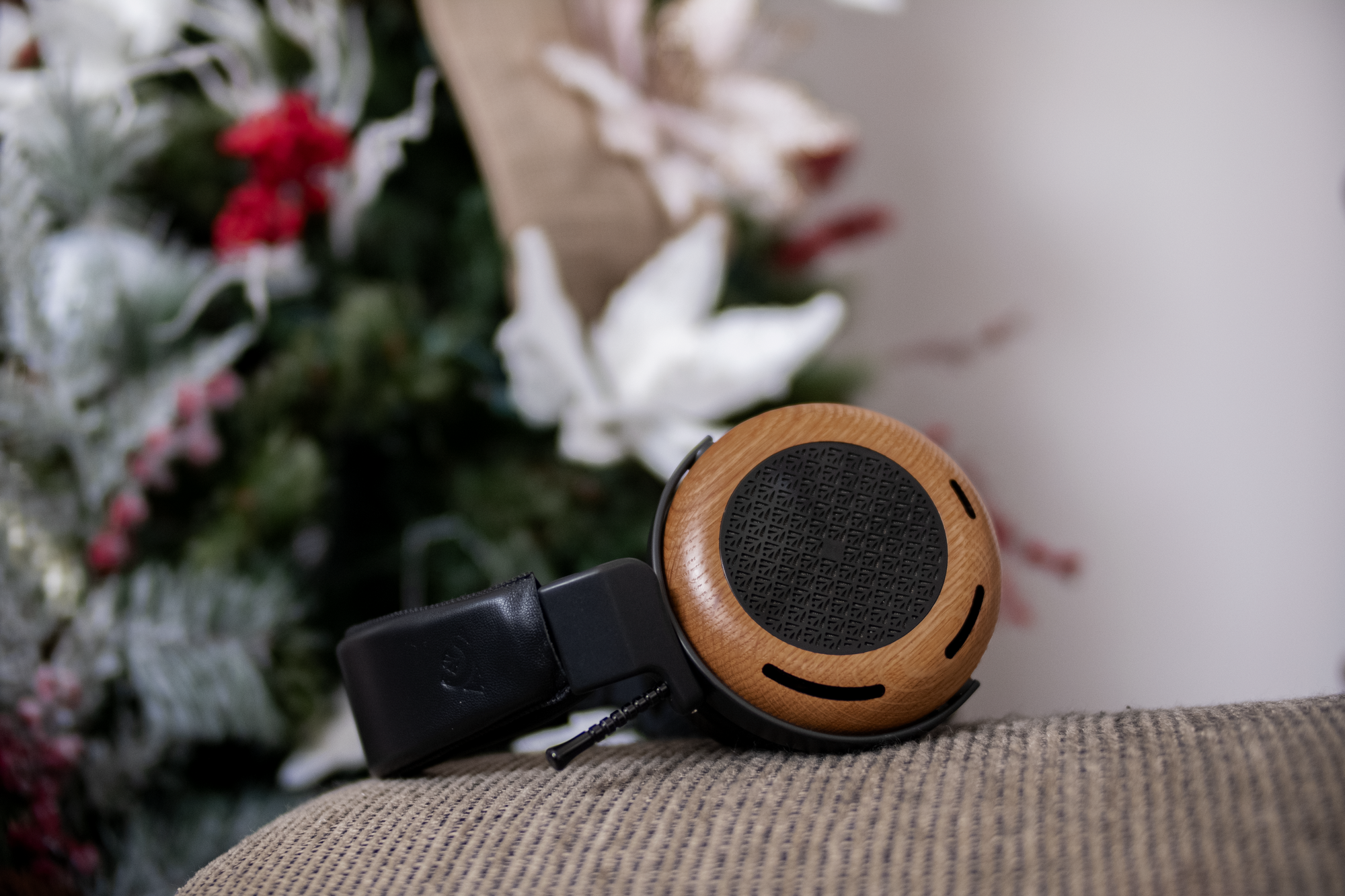
Build
The Caldera uses a custom planar magnetic driver, best described on their website. This review loaner uses a magnesium headband and light oak cups with black hardware, but a darker finish with bronze hardware is also available as a stock option. ZMF grills are typically more intricate than the average headphone, but this art-deco-style grill really fits the “heritage” theme that ZMF products occupy. While the first planar magnetic headphones were released on the early 70s, a bit later than the height of art-deco, it is a fun departure from the futuristic styling of most other modern planar magnetic headphones. I don’t typically talk about weight on a headphone in my reviews because of the variability of comfort between users, but I was surprised to discover that the Caldera was less hefty than I expected it to be. It’s not light, at ___, but the fact that the additional weight of the traditional planar magnetic driver and baffle is mitigated with the use of carbon fiber instead of metal like Audeze uses is a smart form of weight savings.
The pads I received with this Caldera are the Lambskin Caldera pads, Suede Caldera pads, and thin Lambskin Caldera pads. I preferred the thicker Lambskin pads to the others. The Suede version sounded noticeably more duller/lacking in dynamics despite having a little more upper midrange presence than the others and the thin pads sounded the most recessed in the upper midrange, which is the opposite of what I would have expected.
Review Gear
I primarily used a Neurochrome DG300B paired with an Accurate Audio D1000 and Firstwatt F5 or darTZeel NHB108 clone paired with an Exogal Comet in reviewing the Caldera. I do understand that I do not think anybody else in the world is using these exact combinations, so I also used it with my Cayin IHA-6, Questyle CMA800R, SW51+, Headamp Pico, iFi Diablo, and Schiit Magni Piety. The only amp I didn’t love with it was the Piety, which doubled up on warmth on the Caldera and congested the sound a little too much for me. The SW51+, however, was quite nice and would be my pick of the traditional headphone amp pairings as the SW51+’s midrange timbre focus pushed the Caldera’s midrange performance even more to my preference. The IHA-6 is a close-ish second as the low midrange dip I hear in the IHA-6 does complement the Caldera’s warmth.
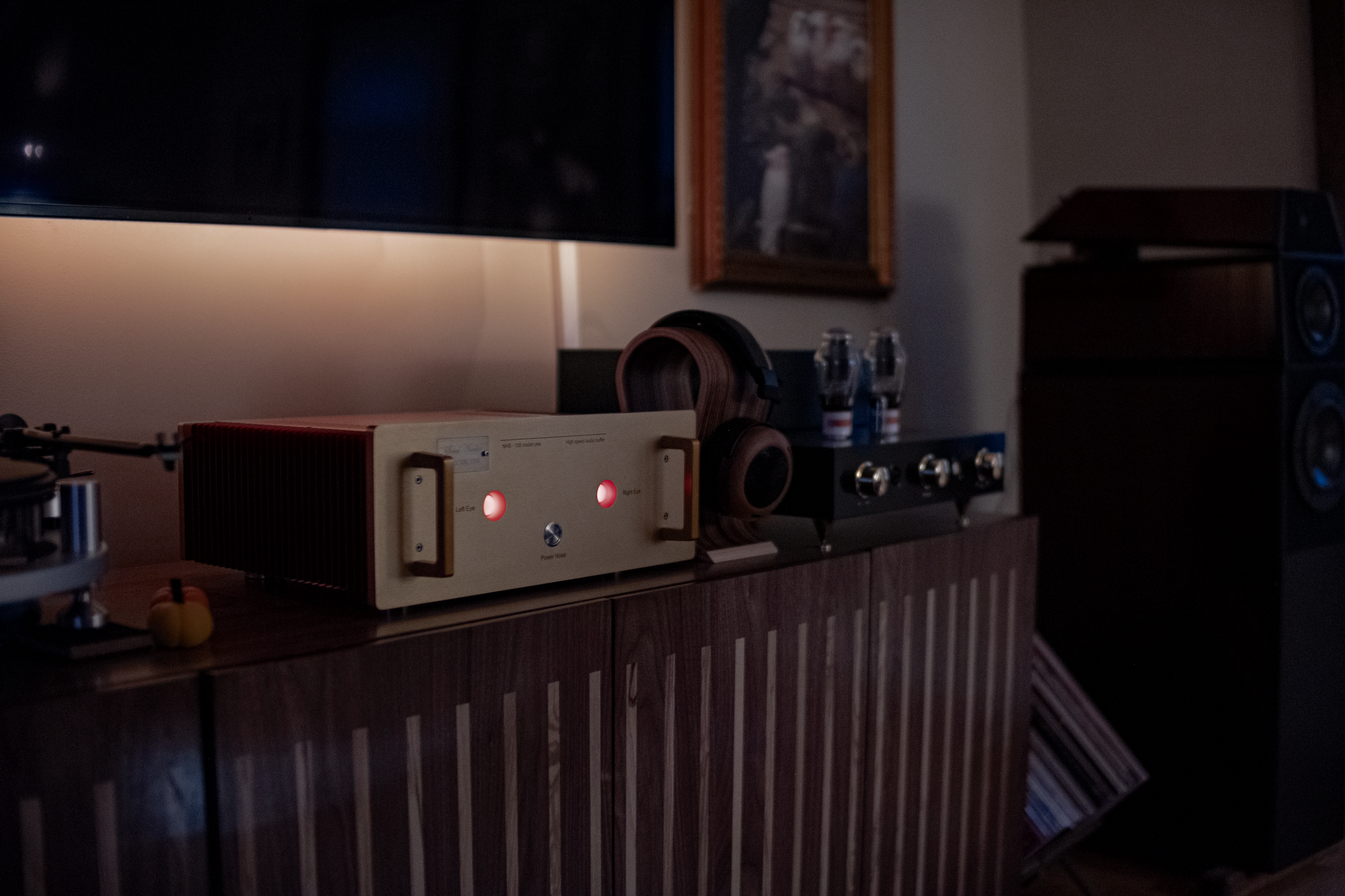
Sound
It’s no secret that I’m not a big fan of the “traditional” planar magnetic presentation. The aspects of sound I index for most are midrange timbre, transients, and realism (e.g. decay, dynamics). Planar magnetic headphones typically struggle with these particular aspects, so it’s been hard for me to really enjoy any of the planar magnetic headphones I’ve heard. I do submit that their strengths: fast decay, flat extending bass, and more obvious detail relating to the more typically compressed sound can be very appealing to listeners, and I’ve recommended plenty of planar magnetic headphones to people who have asked me for those exact qualities in a headphone. But Caldera is different. ZMF is most known for their more romantic, though colored, sound. They’re not headphones for people who obsess over measurements and target compliance. I was worried that the Caldera would be a pivot away from the traditional warm sound and instead be as soft and lean as many other modern planars.
The Caldera is anything but that though, which surprised me at first listen. The Meze Empyrean is an exception to the typical modern planar magnetic headphone sound with its mild upper bass lift leading to a warm sound, but even from my first listen, it sounded strange to me—it was a little too muddy and unrefined, with nasal vocals. Like the Empyrean, the Caldera leans warm. Quite warm, actually. In addition to the Caldera, I also have a ZMF Atrium whose review I’ve kept pushing back (sorry) but while the Atrium has a mild low midrange dip, the Caldera sounds noticeably more filled in. Unlike the Empyrean, I hear better separation between notes but I do feel like I should emphasize system matching for the Caldera will heavily impact impressions. I’m not a big fan of too much warmth in headphones, with the Sennheiser HD650 typically being my limit. The Caldera is warmer still, but the note separation keeps it from sounding congested, even with my warm-leaning Neurochrome DG300B.
Bass
Bass is interesting; as mentioned, the Caldera isn’t lean like a Hifiman Susvara, Final D8000 Pro, Meze Elite, or T+A Solitaire, and it doesn’t extend as flat to 20Hz like the Susvara and Audeze LCD4. In that sense, the Caldera has more in common with dynamic headphones than the average planar magnetic headphone. It’s a “dense” sound. Notes actually carry some weight. I’m not sure how ZMF did it, but I actually hear a sense of decay from the Caldera. It’s not as natural-sounding as the Atrium in that decay still cuts off a little faster than I typically perceive it in a real instrument, but it’s markedly more “normal” sounding than the Susvara to which I’ve been comparing. My only complaint other than this is that it isn’t quite as hard-hitting as the original Hifiman HE-6. I’ve yet to hear any headphone that manages both a warm, comforting sound with impactful bass transients though, so I may be complaining about impossibilities.
Midrange
Midrange presentation is the hallmark of the ZMF sound. A former luthier, Zach places particular importance in midrange. This shows in the tuning of all ZMF headphones, and the Caldera is no exception. Unsurprisingly, the Caldera isn’t totally Harman-compliant. The Caldera actually has a frequency response feature I typically have with Hifiman headphones: it has a dip a little past 1kHz but its rise is earlier, somewhere around 2kHz. This makes for a similar spaciousness that Hifiman is known for, but the earlier rise allows for electric guitars to retain much of the “bite” that I expect from them. The rise is a little higher in elevation than I like, which does make the Caldera sound slightly nasal to me, a complaint I share with most modern planar magnetic headphones (even Audeze, now that they appear to be striving for more pinna gain). Something I expected to be problematic from looking at Zach’s measurements was a dip between 3-5kHz, which is audible, but I found when trying to EQ it up, the Caldera sounded duller and less spacious, so this may be an intentional tuning decision. The dip bothered me less subjectively than the duller EQed sound so your mileage may vary. Like the bass, decay shows itself to be more natural than the typical planar magnetic headphone, but retains speed for complex arrangements. It’s as “Goldilocks” of a headphone as I’ve seen in this tier. I do think the timbre isn’t quite at the level of my Sennheiser HD580 and HD650 but, frankly, no other headphone I’ve heard at any price is either. My headphone journey has strictly been searching for anything to complement whatever those two lack.
One thing I've noticed as time has gone on is that their lower midrange warmth creates a phenomenon like I recall with the Sennheiser HD800: Because the upper midrange is dipped and the lower midrange is elevated relative to the upper midrange, the Caldera is more revealing of bad mixing. Poorly mixed music will tend to sound muddled in the low midrange and cause congestion in the upper midrange. The inverse, however, is also true. Well-mixed music reveals the strengths of the Caldera and allows the headphone to resolve almost as much as any other headphone I've heard, at any price, while relying less on the compression most planar magnetics use to bring forward low level detail.
Treble
Warning: mad ravings for the next few sentences. My first impression of the Caldera with the stock cables was that the mid-treble is a bit too sharp for my preference. I wanted to continue listening from my living room couch rather than standing next to my amp, so I plugged in my own, longer mini-XLR cable. The treble suddenly didn’t bother me. Surely this couldn’t be. I then looked specifically for treble-forward music and, still, treble wasn’t bothersome. I didn’t touch the volume knob, and my cable doesn’t measure with any deviance, so I swapped back to the stock cable. To my surprise, I immediately noticed the treble again. I tried two other cables and they were somewhere in between. Absolutely ridiculous. I don’t have the desire to bother someone to help me conduct an ABX test so feel free to dismiss me as delusional; I can’t believe it myself.
Anyway, like most other planar magnetic headphones, the Caldera has an upper treble lift, though not as elevated as the pre-5 Audeze LCD series which tended to bother me after long stretches. I hear a slight bit of unevenness with low treble, but, as with the upper midrange, I do feel that the small peaks and dips simulate a more "dynamic" sound that EQing took away.
Technical Performance
As a planar magnetic headphone, especially one that costs over $3,000, technical performance is an expectation. I do think macrodynamics aren’t at the level as the Focal Utopia, for example, but I hear a surprising amount of lower level information that isn’t artificially brought up by crushing dynamics like many planar magnetic headphones. Soundstage isn’t as ethereal or phase-defying as the Susvara or Abyss 1266 Phi TC; it sounds more like sitting in an audience.
Comparisons
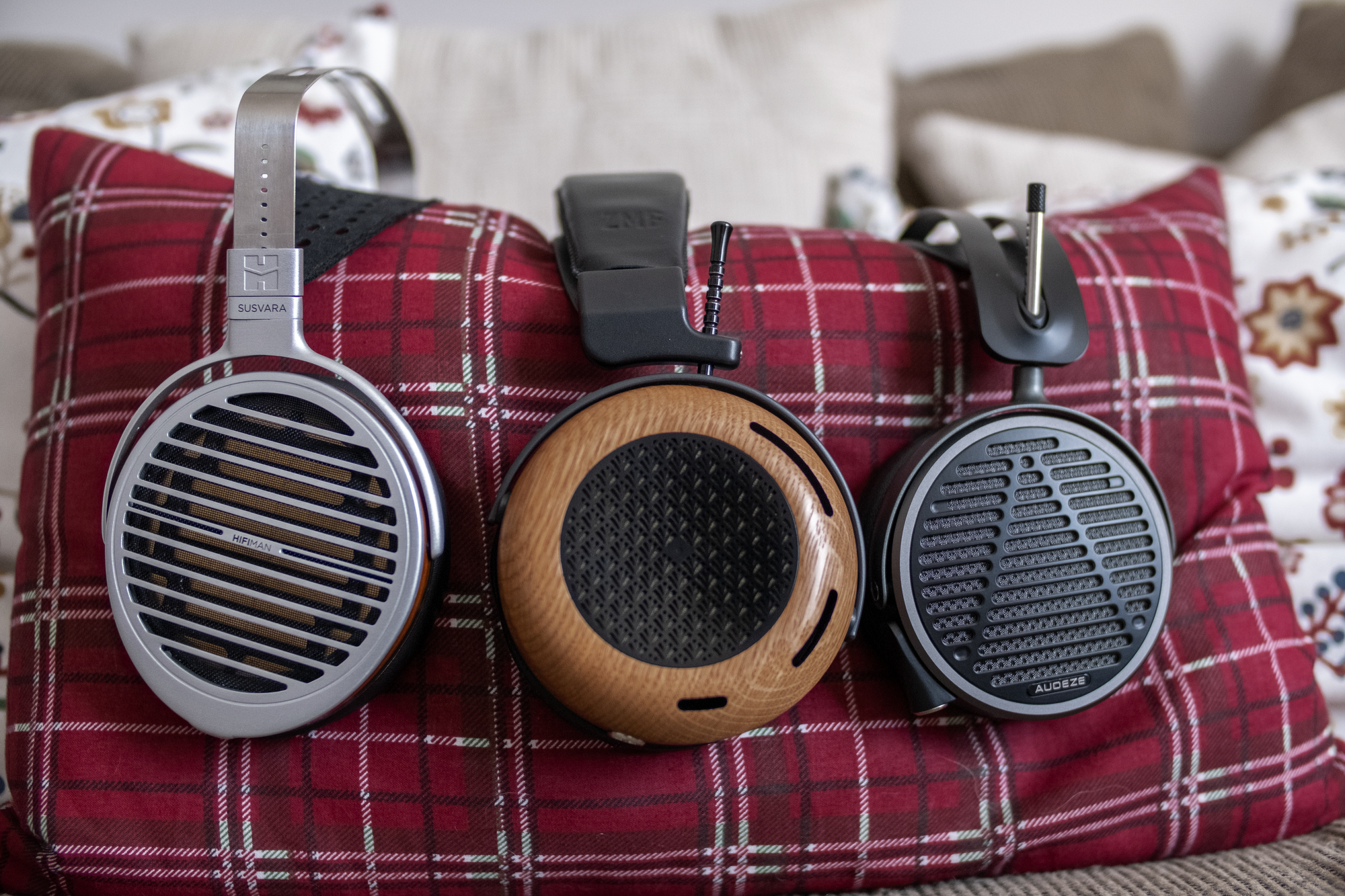
Hifiman Susvara
The Susvara is the headphone to which I was most interested in comparing the Caldera. Thankfully, my co-writer Humble graciously allowed me to borrow his Susvara and 4-screw Hifiman HE6. For those wanting a clear cut answer to, “Is the Caldera or Susvara better?” Shame on you; you should know this isn’t how audio works. Headphones, especially headphones at this level, are a game of give and take. While I personally don’t see myself ever owning a Susvara because, in most of my music consumption, I don’t often listen for its greatest strengths: speed and detail retrieval. As a band nerd through college, I’ve always focused more on making sure instruments sound like, well, instruments. The Caldera strives closer to this goal than the Susvara, so I personally will pick the Caldera over the Susvara almost every time. However, what I prefer doesn’t matter; you, the reader, likely don’t have the same preferences or goals as I do so the best service I can do is be granular in my comparison. I used both the FirstWatt F5 and darTZeel NHB108 clone for this comparison, so power is absolutely not an issue.
The Caldera and Susvara strive for different presentations of bass. The Caldera provides thicker mid bass and upper bass than the Susvara, which sounds rather thin when compared back to back with the Caldera with its flatter target. What the Susvara does tend to achieve, however, is slightly better sub bass extension. I do believe there is often an outsized emphasis on sub extension, as the amount of music I listen to, and I would imagine most non-EDM-heads or non-organ-devotees listen to, that actually requires extension to 20Hz is infinitesimal compared to music that rewards performance elsewhere in the frequency spectrum, but it is worth mentioning that the Caldera dips sub bass about 2dB relative to the Susvara. However, that may also be related to my hair: I've needed a haircut for a couple weeks, which may lead to poorer seal, which in turn leads to worse sub bass extension. Beyond amplitude, the Caldera did seem to reveal texture in a more natural way as well. While the Susvara was able to resolve individual notes well, the Caldera's more accurate reproduction of decay adds to the sense of realism--being able to hear the attack, decay, and sustain of an instrument fleshes out the whole experience to me, and while the Susvara is a noticeably faster sounding headphone, this sounds fake to me, and this reveals itself to be problematic to me in every aspect.
Midrange is a problem I've always had with the Susvara, and listening to the Caldera has helped me understand why I'm so unhappy with the Susvara. Both the Caldera and Susvara have dips in the upper midrange that seem to create a more spacious sound: the Susvara dips starting at 1kHz and rises at around 2.5kHz. This leads to a vocal presentation that has always sounded quite nasal to me, no matter what chain I've used with the Susvara. The Caldera also dips at 1kHz, but rises sooner, at around 2kHz. This, on paper, is not a significant difference. The actual disparity between preference for me, I believe, is that the Caldera uses that upper midrange dip in combination with the warmth of the low midrange and additional peaks and dips past 2kHz to create a more involving, emotional sound. In contrast, the Susvara is much less dramatic, almost sterile. While "colored" seems to be a four letter word in describing sound, the Caldera uses this coloration to compel me to rediscover music and move me in ways I don't experience with other, more "neutral" headphones. The Susvara, on the other hand, makes detail apparent, but sounds almost robotic in comparison. It's a flavor of presentation that is useful in comparing other headphones to it, but I found my time with the Susvara to be strictly using it for that. I never actually enjoyed listening to music with the Susvara, I only used it to discover what detail other headphones resolved less than it.
Moving to treble, the Susvara is brighter than the Caldera across the board. Unlike the Caldera, the Susvara's treble is less dramatic. It doesn't have the same kinds of peaks and dips as the Caldera, but, again, the only time the Susvara's treble compelled me to feel anything was when I felt it made bright recordings sound too bright.
The Susvara's soundstage is the main "party trick" it has that I can see people preferring over the Caldera. It's a more ethereal and wide than the Caldera. It doesn't approach speaker soundstage, but it is closer to electrostatic headphone stage. Instruments don't blend together on a stage like they do with the Caldera, they sound discrete, like listening to separate recordings. I rarely hear a sense of cohesion with the Susvara in the same way I hear with most other headphones. I don't necessarily think this is wrong, as detail-heads will likely find this more interesting because it is easier to extract more from instruments, but the Caldera does sound noticeably more "realistic" in that the presentation of the Caldera matches the idea of a stage performance more closely.
This comparison seems largely like an indictment of the Susvara and while I don't intend for that, I can't help but feel this way. I've used several Susvaras over the years and every time I mention my lukewarm-at-best feelings, Susvara owners are quick to mention I'm not using a powerful enough amp. When I say I've only used overpowered speaker amps with the Susvara, the goal posts move, and I don't know if they will end unless I end up buying "amp du jour," which seems like it changes every few months, and then the previous amp is cast away. The problems I've had with the Susvara manifest themselves across every single setup I've used it with, so at some point, the gear stops being the problem and the easier explanation is that the headphone just sounds like that. I think it is totally valid for people to love the detail-heavy, moderately bright and lean sound of the Susvara, but I found listening to music with the Susvara to almost be a chore. So the answer to, "Is Caldera or Susvara better?" is this: "The one that fits what you want out of your music more." I see compelling points for both sides, so its more likely that the question isn't either/or, it's being able to justify the significant monetary outlay involved in owning both.
Audeze MM-500
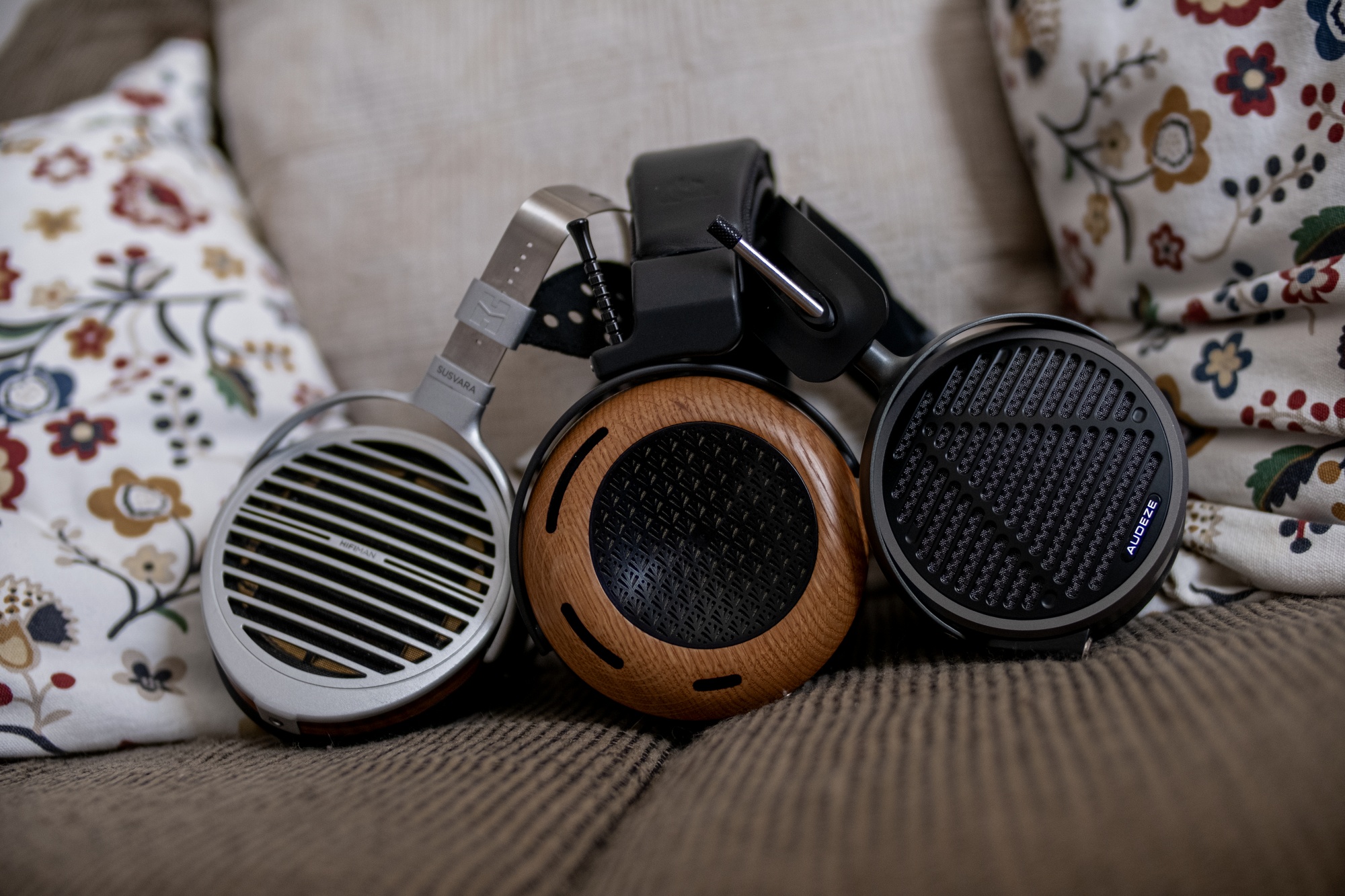
Coming from the Susvara, using the MM-500 as a comparison may look strange. The simplest answer is that this is the only one I could easily access, as I sold my LCD-4 because I felt like mine sounded so much worse than every other LCD-4 and don't want to play the Audeze lottery again with another LCD-4. I also didn't want to borrow another multi-kilobuck headphone in the LCD-5. But, by chance, I actually prefer the MM-500 to the LCD-5. Flux put my thoughts on the LCD-5 much better than I every could, but to put it simply, I find it less technically impressive than the LCD-4 and tonally, despite having more pinna gain, more annoying than an unEQed LCD-4 as well. The MM-500, however, sounds more tonally correct than the LCD-5. It does sound significantly more compressed, but I can actually tolerate listening to music with the MM-500 for more than one song, unlike the LCD-5.
The most fatal flaw the MM-500 has is a profound lack of dynamics. It's something that was obvious even to my partner, who has no critical listening experience. When they used the MM-5oo, they described them to be about as dull as their AirPod Pros. Frankly, I'd agree. While tonally, the MM-500 has no major problems, it's jarring to use the MM-5oo and realize they cost $1,799 because they sound like a Volume Normalization button. They're a fantastic passive listening headphone because it's easy to forget I'm actually listening to music when I have the MM-500 on, but they really do sound frustratingly dull due to the lack of dynamics.
Interestingly, the MM-500's sounds less thin in the lower end than the Susvara, despite also measuring flat into the subbass. This may be related to a slight bit of warmth in the low midrange that the Susvara does not have, so it appears to sound more "complete" in its transition from bass to midrange. The Caldera's bass is more dynamic and elevated in amplitude though, so switching to the MM-500 from the Caldera does yield an immediately thinner perceived sound. Caldera also reproduces texture noticeably more realistically than the MM-500, due to the more believable attempt at conveying decay.
Midrange will be more of a tossup between the two than bass. The MM-500 is more likely to sound "normal" than the Caldera, due to better adherence to the Harman target from about 1kHz to around 3.5kHz. Additionally, I found the MM-500 to sound more forgiving of bad recordings, possibly in part because of its thinner sound relative to the Caldera. Timbre of the Caldera does edge out the MM-500 again due to the more believable reproduction of texture, but I would not blame anyone that prefers the more Harman-targeting midrange of the MM-500.
Unlike most Audeze, the MM-500 does not have an awkward mid treble and upper treble elevation that makes the older LCD-line sound fatiguing after long sessions. As a result, the MM-500 may be more pleasing to those who are sensitive to treble, but I did often find the MM-500 to sound rather dull, compounding onto the severe lack of dynamics.
The Caldera does sound noticeably more adept at detail retrieval, which is not surprising, seeing as the MM-500 is half the price of the Caldera. The MM-500's level of detail retrieval is surprising though, as I'm unable to hear some things with the MM-500 that I hear from my much, much cheaper Sennheiser HD650. Soundstage from the MM-500 feels more "in my head" than the Caldera as well. Part of this is related to a smaller upper midrange dip, but I was never able to forget I was using a headphone with the MM-500 on.
I'm disappointed with the MM-500; for the first few seconds, it's a very nice headphone, sounding so much more "normal" than most other headphones I've heard at any price but after the first few seconds of shock, the cracks started to appear. While I'm not sure many people with the budget for the Caldera will be shopping in the MM-500's price range, it is worth investigating whether or not trying to save money can yield a product that is mostly as good. Unfortunately, while the MM-500 is more Harman target adherant past the bass, it is a noticeably inferior experience from a technical standpoint. The dynamics and technical aspects aren't just worse than the much more expensive Caldera, they're worse than headphones that cost 20% of the MM-500. However, if Audeze could somehow combine the MM-500's tonality with the technical ability of the LCD-4, they'd have a strong contender for the best all-around headphone in existence.
Hifiman HE-6
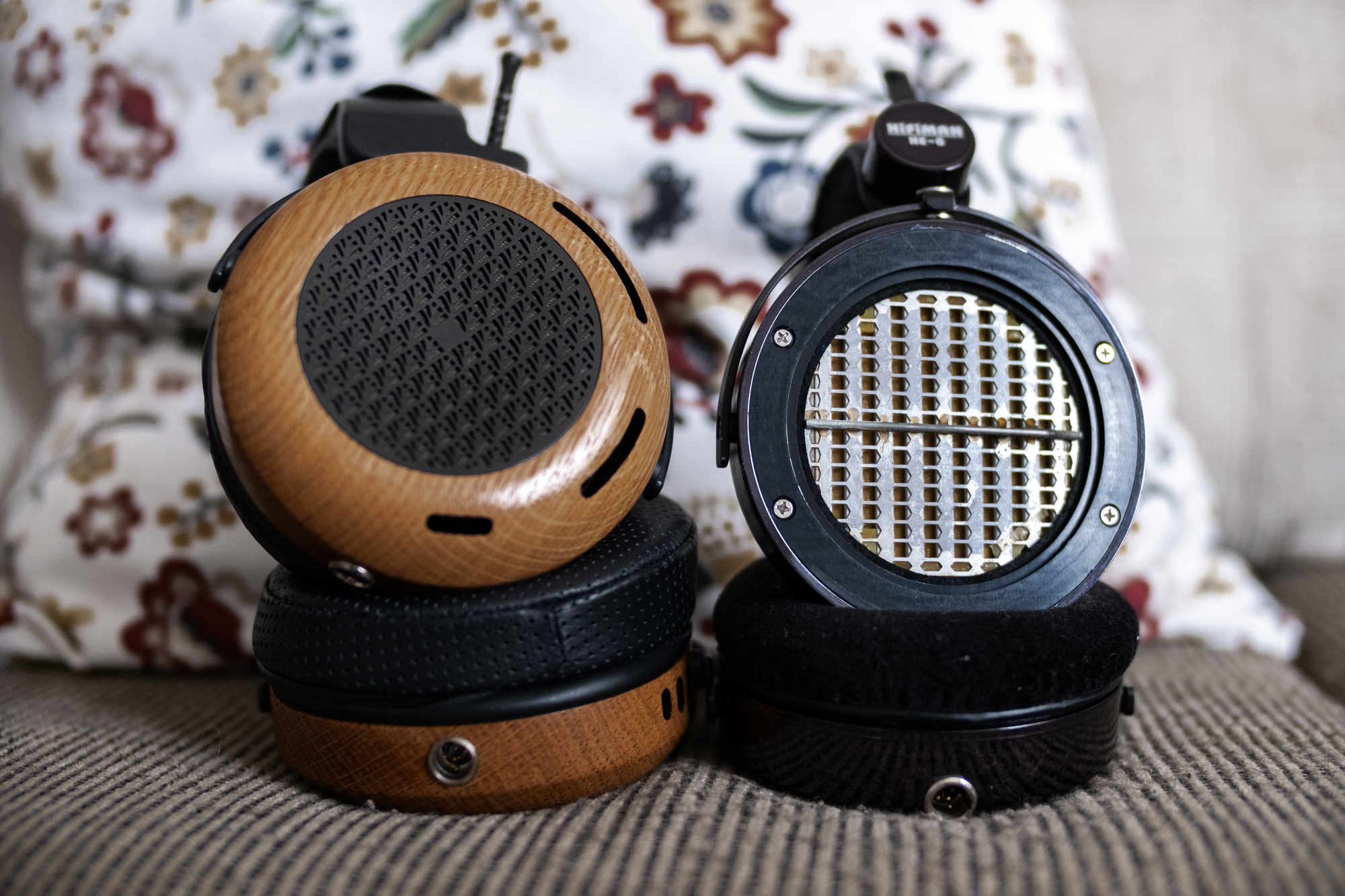
I have some reservations using the HE-6 to compare to the Caldera. While it is one of my favorite headphones at any price, and was my favorite planar magentic headphone period, it has been out of production for years and Hifiman has no parts to repair should anything happen. If the HE-6 were reliable, this may not be such a problem, but there are inherent issues with the design of the HE-6 that mean if the drivers start failing, there isn't really a way back in most situations. There is some hope, as the creator of the NAN-6 and NAN-7 in China was able to fix this particular pair after premature death, but I do not know if he will always be able to fix drivers, and I don't even know if he will continue to fix headphones, now that he has two different products in the market. I also perceive this particular headphone to lack the same visceral nature I heard from my former pair.
This particular pair, also on loan from Humble, is a rare early 4-screw pair, like my own pair. Systematic Sound has a fantastic write-up describing the differences here. The HE-6 was Hifiman's first true flagship, barring the HE-Audio Jade. It was an absolute pain to drive, with Tyll Hertsens' pair measuring below 75dB/mW sensitivity, far below the rated 83.5dB/mW sensitivity advertised. It was popular to use them with speaker amps, to the point where Hifiman themselves sold an XLR to binding post adapter to be able to use the HE-6 with tube speaker amps easily. Some claimed this made the HE-6 sound worse, so many likely opted to use pure adapters, as I did. The HE-6 was a dangerous headphone. It thrusted a wall of sound at the listener with thunderous transients, proving itself to be the closest headphone I've ever heard to replicating the energy of a live concert, for better or for worse. The Focal Utopia, for example, had stronger dynamics, but had less of that pure "wall of sound" presentation that kept me turning my music up louder. I sold my pair for my own safety, as I lacked the self-control to listen to them at a safe volume--they just didn't sound right that way. Years later, as I use the HE-6 again, I don't hear the same thunderous sound. I'm not sure if it was the comparative inexperience or repair, but I don't connect to the HE-6 as much as I used to. While it is still more aggressive than the comparatively calm Susvara, it's not quite as involving as my memory states. My guess is that the pads were a lot of the magic; while this pair uses similar velour pads to my pair, my pair had the clear plastic backing on the pads from the above link while this one has perferations. This makes for a less reflective pad, though I won't pretend to know what exactly this changes.
As with the Susvara, I primarily used speaker amps with the HE-6. The other amps seemed to dull the sound. I'm not sure why; I even listened at quieter perceived volumes with the speaker amps. With headphone amps, I tended turn my music up so loudly my ears would ring for a few minutes afterward, but with the speaker amps, I never experienced this and still perceived more dynamics.
Bass on the HE-6 is more visceral than the Caldera, but not quite as articulate. A few tracks sounded slightly more muddled with the HE-6 than the Caldera, despite the HE-6 sounding significantly less warm in the upper bass. Similarly to the other planar magnetic headphones, the HE-6 has a distinct lack of texture that the Caldera appears to be more adept at resolving.
Midrange was the area I always felt HE-6 was weakest. It has a similar upper mid dip as the Susvara but lacks the resolution the Susvara has, so when comparing to the above, it's clear that the HE-6 has fallen behind the rest of the pack. Instruments do sound aggressive due the caricaturized transients the HE-6 outputs, but when combined with the recession, sounds awkward. The bite isn't accompanied with the body of most instruments. This, I feel, is the problem with most planar magnetic headphones; the Meze Empyrean is one of the only modern planar magnetic headphones I can think of with low mid/upper bass warmth, but it sounds so compressed that it sounds like a much lower-tier headphone. The Caldera does still lack the sheer sense of energy the HE-6 has, but it gets closer to making instruments sound realistic in that sense than most.
The HE-6's treble likewise tends to be hit or miss for listeners. With the stock velour pads, the treble has a stronge elevation between 9-10kHz, which fatigued me in short order. I also hear a slight amount of grain, which exacerbates the harshness of the mid treble.
The technical aspects of the HE-6 trail behind the others as well; as above, the HE-6 seems to smear fine details such as crowd chatter together, while the Caldera tends to be noticeably better at resolving and separating these details. The HE-6's upfront presentation is matched by its relatively small soundstage.
Using the HE-6 as a comparison point is purely self-indulgence on my end. The HE-6 was the only planar magnetic headphone I have any strong feelings for, and that is mostly because it provided a fun, visceral sound that was unusual for a planar magnetic headphone. Hearing it again makes me believe my memories were rose-tinted, but with the insane price increases in the used market the HE-6 is getting, the HE-6 is dangerously close to the Caldera's price, and I don't know if paying those amounts makes much sense.
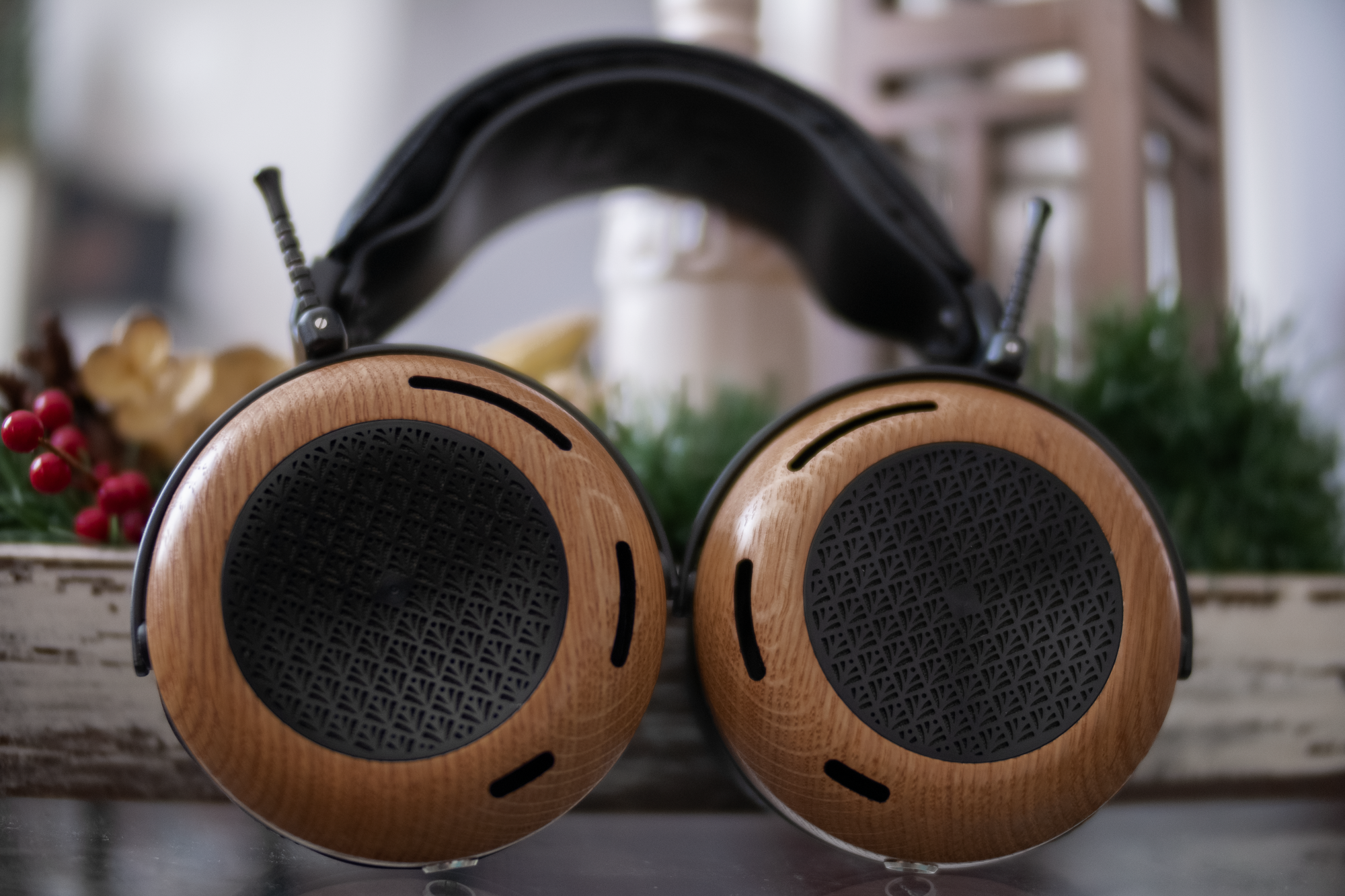
Conclusion
The Caldera has made a strong impression on me, but this price point forces most prospective customers to reflect on what they want in a headphone. This is not the technical force that the Hifiman Susvara is, nor does it sound like most other planar magnetic headphones. I do consider this to be a good thing myself, as it attempts to split the difference between the planar magnetic headphone strengths and charm of many dynamic headphones. This surely does sound like a planar headphone that ZMF would make--one that prioritizes a fun listening experience over a sterile analysis of music. I don't think this headphone is for the crowd that focuses on the objective performance of an amp or DAC, as the lack of Harman compliance will likely be a turn-off to them. The Caldera forced me to listen differently; in critical listening, I was able to pick out flaws with the Caldera, and the trope, "this headphone is for enjoying music," is a little too played out for me, as I've used this line myself too many times. But the Caldera really does something interesting by taking the deviations in its frequency response and melding them into something more than the sum of its parts. This lines up with the rest of the ZMF line. Each headphone in the ZMF line fills a different niche, and I wondered where a planar magnetic headphone would fit in their lineup. Unsurprisingly, the Caldera manages to carve out a niche not just within the lineup, but in the market as a whole.
I know the Caldera may not be for everyone, as it does inject its own coloration into music, but unlike many headphones I hear at shows such as CanJam, the Caldera isn't a first impression headphone. It's more of a slow burn. After a couple months with the Caldera, I think about how much I'm going to miss how I'm able to experience my music with it, and now, without question, I'm preparing my wallet for the sting of buying one of my own.
Comments?
Leave us your opinion.